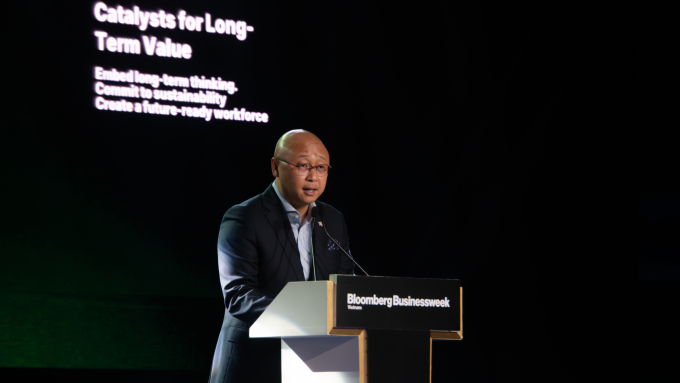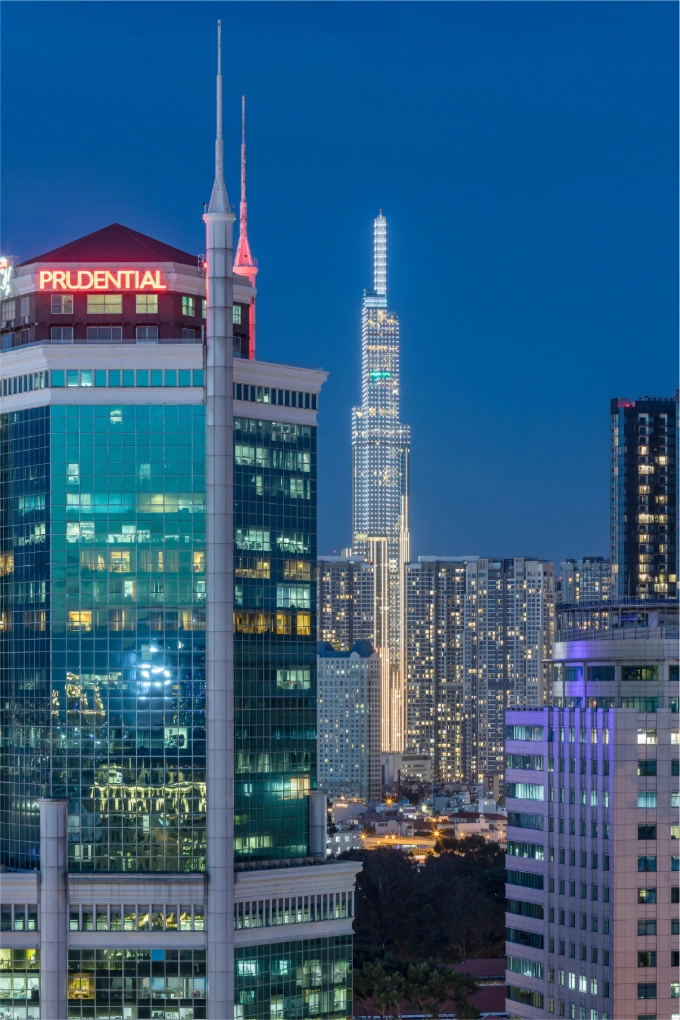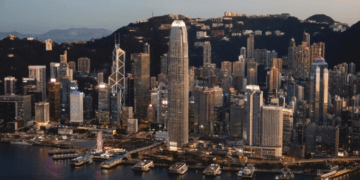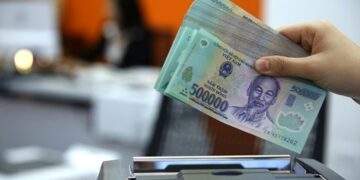‘Silent investor’
Vietnam is entering a pivotal stage of development, with the economy showing strong signals on multiple fronts. In the third quarter of 2025, GDP is estimated to have grown by 8.23%, while foreign direct investment reached its highest level in five years.
However, sustaining long-term growth requires greater economic resilience and the expansion of stable capital flows—especially amid global uncertainties. Within this context, the insurance industry has emerged as a form of “soft infrastructure,” linking finance, social security, and broader development goals.
Traditionally viewed as a financial safety net for individuals and businesses, the insurance sector today is also a major provider of long-term capital for the economy.
 |
|
Kevin Kwon, CEO of Prudential Vietnam. Photo courtesy of Prudential Vietnam |
Speaking at the Vietnam Future Economy Summit on Nov. 14, Kevin Kwon, CEO of Prudential Vietnam, said that as one of the major institutional investors in the country, Prudential Vietnam is not simply reinvesting capital—it is helping catalyze sustainable, long-term economic growth.
In Q1 2025 alone, the insurance sector reinvested VND860 trillion (US$32.64 billion) into the economy, with Prudential contributing nearly VND183 trillion.
“Our goal is not only to pursue growth but also to help build a more transparent, better-governed economy that attracts long-term capital for Vietnam’s future,” Kwon said.
According to him, this capital goes far beyond financial returns. It is reinvested responsibly into infrastructure, healthcare, green energy, education, and other sectors prioritized in Vietnam’s Socio-Economic Development Strategy 2021–2030—a roadmap that aims for a green, circular, and balanced economy centered on long-term, inclusive development.
Because of its stability and long-term nature, insurance capital strengthens the financial foundation, reduces cyclical risks, and enhances sustainable growth—factors critical to Vietnam’s long-term development ambitions.
Untapped potential
According to Beyond Coverage—The Social and Economic Impact of Insurance in ASEAN, a study released by Prudential in September 2025, Vietnam’s insurance penetration rate is around 3% of GDP—far below the global average of 6.7%—signaling significant room for expansion.
The report projects that if insurance coverage increases by 50%, GDP per capita could rise by 4.1%. A threefold increase could boost GDP by 17.4%. These findings highlight the industry’s potential as a driver of sustainable development: helping households withstand risks while channeling long-term capital into the economy. At the same time, new policy reforms are strengthening the institutional framework supporting this shift.
 |
|
A building with Prudential logo in Ho Chi Minh City, Vietnam. Photo courtesy of Prudential Vietnam |
In May 2025, Resolution No. 68-NQ/TW on private sector development officially recognized private capital as “the most important driver of the economy,” opening new avenues for financial institutions—including insurers—to play a deeper role in national development strategies.
As Vietnam and the U.K. recently elevated their relationship to a Comprehensive Strategic Partnership, both countries reaffirmed commitments to expanding cooperation in finance.
At the summit, Kwon outlined Prudential’s long-term orientation. He said the company is returning to its core values—rebuilding trust, strengthening foundations, and aligning with national priorities. He emphasized that businesses acting responsibly will continue to attract stable capital and contribute to inclusive growth.
“With the long-term perspective of the life insurance industry, we align with Vietnam’s national priorities and are ready to contribute to strategic projects such as the International Financial Centers in Ho Chi Minh City and Da Nang. Vietnam’s prosperity is also our success.”
For more than 26 years, Prudential has been a pioneer in Vietnam’s life insurance sector and one of the country’s most significant long-term investors.





